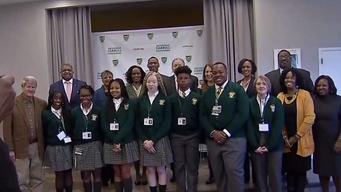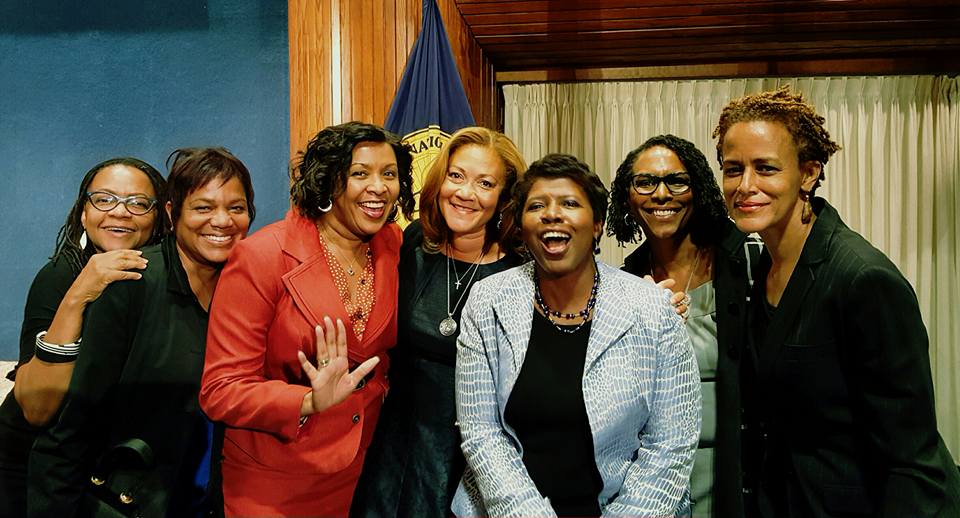
by Yanick Rice Lamb | Mar 10, 2021 | Articles, My Work |
Akron put America on wheels, manufacturing most of the country’s tires and earning the title Rubber Capital of the World. Once among the fastest-growing U.S. cities, it attracted tens of thousands of people seeking work in its rubber factories. Those jobs are mostly gone, but the health effects of the toxins that workers encountered every day still linger. Some illnesses are just now surfacing and could keep doing so for generations among the families of rubber workers and area residents who breathed the same air and drank the same water. Fund for Investigative Journalism grantee Yanick Rice Lamb tells a moving story of how all of that came to pass — the rubber, the factories, the jobs, the pollution, the sicknesses — and how it continues to shape the lives of people and families in Akron and beyond. Read her series through a partnership of Belt Magazine and the Center for Public...

by Yanick Rice Lamb | Dec 9, 2018 | My Work, Uncategorized |
STRONG LEGACY — I’m honored to be on the board of the new Jim Vance Media Academy at Archbishop Carroll High School in Washington, D.C. The Vance Scholars show great promise, and it gave us chills to hear them recite their journalism pledge of ethics. Our future is...

by Yanick Rice Lamb | Mar 29, 2018 | Articles, My Work |
I didn’t know that my family was “broken” until I heard it on the news. Although my parents divorced when I was five years old, my father was still in my life. So, too, were my attentive stepfather, a doting grandfather, wonderful uncles, cousins and neighbors. My siblings and I grew up in an all-important “village” filled with caring people who still care about us as adults, now with our own children and grandchildren. I’m also the first-born of an immigrant family from a “shithole” country, according to the president of the United States. In addition to what the president dreams up on his own, his views and other stereotypes held by too many people often stem from media portrayals that are distorted or nonexistent. Fifty years ago, the Kerner Commission blamed such media portrayals, or lack thereof, for contributing to nationwide uprisings in the summer of 1967 by African Americans who were sick and tired of being sick and tired, to paraphrase Fannie Lou Hamer. The National Advisory Commission on Civil Disorders, as it was officially called, appointed by President Lyndon Johnson to investigate the underlying causes of the unrest, made some sobering findings, concluding, “Our nation is moving toward two societies, one black, one white — separate and unequal.” It also found that the media presented a fragmented picture to the public that failed to show the everyday lives of black and brown people and that underplayed disparities in areas such as education, housing, employment, income, health, and policing. To mark the 50th anniversary of the report, commemorative conferences, studies, and other research have assessed progress, or lack thereof,...

by Yanick Rice Lamb | Dec 4, 2016 | Articles, My Work |
Gwen Ifill made it easier for Sonya Ross to cover the White House. She set a great example, provided pointers, and boosted her confidence. “She blazed a trail,” said Ross, a White House reporter at the Associated Press for nearly seven years who is now AP’s race and ethnicity editor. “She didn’t just teach me how to do it; she showed the world how to do it.” Indeed, people around the world were stunned by reports of the 61-year-old Ifill’s death from cancer in mid-November—two days before she was to receive the 2016 John Chancellor Award for Excellence in Journalism at Columbia University. Everyone from President Obama to people on the street praised the way in which she protected “the public’s right to know” throughout her career, most recently as moderator and managing editor of Washington Week as well as co-anchor and managing editor of PBS NewsHour. However, her loss is especially profound for African-American journalists, especially women. The pool of black journalists covering national politics is small, and it’s even tinier for coveted beats like the White House and presidential campaigns, of which Ifill covered seven. “She showed that, number one, black journalists can do that,” said Vanessa Williams, a national reporter at the Washington Post who covered the recent election. “There are not a whole lot of us, but there are more because of Gwen.” Click here to read more...

by Yanick Rice Lamb | Oct 28, 2016 | Articles, My Work |
Like a tsunami, the highs and lows of the past rush over visitors to the Smithsonian’s new National Museum of African American History and Culture in Washington, D.C. It isn’t so much that the information is news to us, but we aren’t used to being hit with so much of it at once. As one misty-eyed woman visitor put it, “They told it all”—from Black Power to #BlackLivesMatter. They told the good, the bad, and the downright ugly, but it’s an inspiring kind of sensory overload that makes you want to come back for more. The curators start the story below ground, evoking the feeling of being in the bowels of slave ships that stole our ancestors from Africa. Through a glass wall of a descending elevator, time travels in reverse as the years roll back to the 1400s. Walls on the lower level tally the millions of Africans that Portugal, Spain, France, and other countries pushed through the Middle Passage. The evidence is also there in tiny shackles, a sparse cabin, slave narratives, and instruments of torture. They told it all—deeply in some places, but with broad and sometimes light strokes in others. The museum displays only a fraction of its holdings, about 3,000 of 37,000 objects. And for the most part, it does justice not only to the whole of African-American history, but also to the stories and contributions of women within that history. Click here to read more...

by Yanick Rice Lamb | Jun 20, 2016 | Articles, My Work |
Preston Clark was so sure that the Cleveland Cavaliers would win Game 7 that he wore a championship T-shirt to a watch party at LeBron James’ alma mater in Akron, Ohio. By halftime, Ace Epps was envisioning the Cavs pouring “golden” champagne all over the locker room in Oakland, California, even though they were down by seven points at 49-42. And Edith Cunningham-Bowman spoke about the possibility of a ring as if she were about to be betrothed. They were among their own at the LeBron James Arena at Akron St. Vincent-St. Mary High School with perhaps a stray Golden State Warriors fan or two among the 500 followers of King James who cheered his every block and basket, wearing No. 23 jerseys from his high school and pro careers. “What better place to be than at St. V, where it all started,” Cunningham-Bowman said of the gym renamed for and renovated by Akron’s favorite son. The watch party was organized and hosted by Willie McGee, who returned as athletic director at St. Vincent-St. Mary, where he and James were part of a local fab five who captured the state championship in 2003. Long before the NBA Finals, people laughed and called such talk of Cleveland winning it all crazy — especially when Golden State had a 3-1 lead and home-court advantage for the deciding game. People also laughed two years ago when I speculated that James might head back to Ohio. Not only did James have unfinished business in his quest to lead the Cleveland Cavaliers to a championship, but he was also feeling the tug of home....








Recent Comments